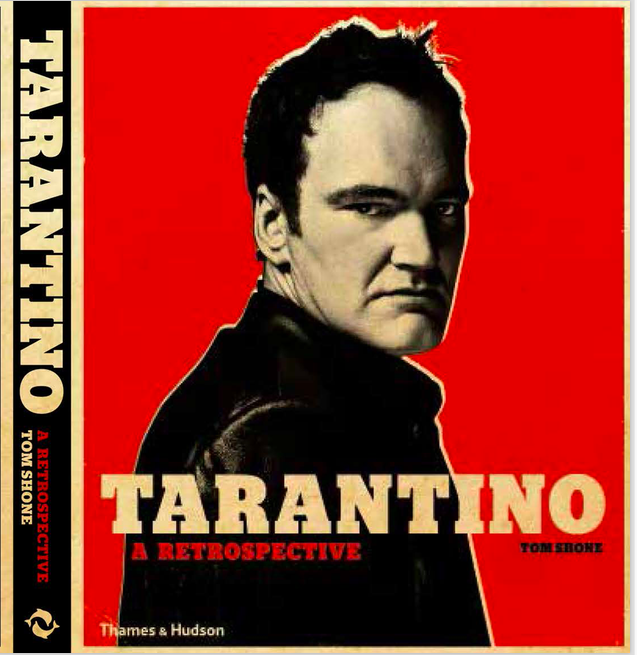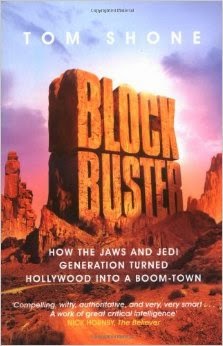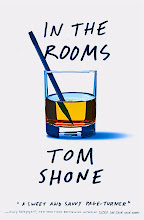skip to main |
skip to sidebar

'Linney has the droll, sympathetic
manner of a veteran novelist: the kind of woman you might talk to all evening at
a dinner party before realizing in the car on the way home you were the one who
did all the yakking. That, you suspect, is how she likes it. A theatre actress by training, she affects
surprise and humility at her movie career, which has often found her playing
the kind of women it might be easy to take for granted — her struggling single mom in 2001’s You Can Count On Me, her devoted first
lady in the HBO series John Adams —
who nonetheless find themselves acting in a way which surprises them as much as
everybody else. She makes mysteries of ordinary people.' — from my interview for Net-a-porter magazine

1. Life's Work — The Weather Station
2. Vapour —Vancouver Sleep Clinic
3. The Only Thing Worth Fighting For — Lera Lynn
4. I Know I'm Not Wrong — Fleetwood Mac
5. A Field Of Birds — The Tallest Man on Earth
6. Diana Krall — Don't Dream It's Over
7. Depreston — Courney Barnett
8. Somebody Was Watching — Pops Staples
9. Primrose Green— Ryley Walker
10. Gracious — Bobby McFerrin

'Not for nothing does the trailer for Jurassic World
feature a 15-ton Monosaurus, rearing up from a Seaworld-style lagoon to devour
a dangling Great White Shark, acting as bait. These days, Jaws counts as a pre-lunch snack. Jaws has become synonymous with wide openings but the chairman of Universal, Lew Wasserman, actually dropped the number of
theatres the film played in from a proposed 900 to 409. “Lew said ‘I want you to drop three hundred of them. I
want this picture to play all summer long. I don’t want people in Palm Springs to see the picture in Palm Springs. I
want them to have to get in their cars and drive to see it in Hollywood,’” the film’s late
producer Richard Zanuck told me before his death in 2012. “He was so fucking
clever, because that’s exactly what happened.” In
other words, the theatrical release of the original summer blockbuster benefited
from the oldest trick in the book — artificially reducing supply to
increase demand. The film’s eventual 409
cinemas wasn't even closest to the widest opening —the year before, Warner Brothers had opened The Trial of Billy Jack
on 1,000 screens and watched it take $89 million. And while Universal devoted $700,000 to promoting Jaws, the
largest such expenditure in the studio’s history, Zanuck and partner David Brown’s insistence on
using the same image of a shark’s head that adorned author Peter Benchley’s
paperback, to cross-promote film and the book (“from the acclaimed bestseller
by Peter Benchley…”) was a tactic borrowed from the playbook of producer Robert
Evans, who had done the same with The Godfather and Love Story. “The making of a blockbuster
is the newest art-form of the 20th-
century” Evans told Time magazine. The modern summer blockbuster owes as much
to Ali McGraw saying “Love Means never having to say you're sorry” as it does Roy
Scheider going “we’re going to need a bigger boat.”
— from my piece on Blockbuster Strategies for the FT

'Like
all Pixar films, the new one seems both impossible when you first hear of it and
inevitable once you’ve seen it. The neurological basis of emotions turns out to
be a surprisingly good subject for an animated cartoon, the brightly
personified emotions almost like mini-animators themselves, pulling levers and pushing
buttons to retain control of Riley’s reactions as she negotiates the moody,
unruly emotions of pre-adolescence, as joy and Sadness attempt to overcome
their differences and return to base. It’s as if Docter were asking: what
animates us? Some of his inventions
are happier than others. The Islands of
Personality that mark the outer perimeter of Riley’s internal landscape — Friendship Island, Family Island, Hockey
Island, Goofball Island — had a slightly
anodyne, theme-park feel to them, and I was relieved to see them crumbling and
slipping into the abyss, as Riley grows more sullen and withdrawn, like those
cliffs tumbling into the sea at the end of Inception: M C Escher meets The Beano... There
is a transluscency to the film's ingenuity:
you can see the idea glowing beneath the skin of the movie, which at
times resembles a live brainstorming session of the Pixar braintrust. What
keeps it from the ever-present threat of abstraction and allows it to find
deeper anchor is the increasing size of the role Docter gives sadness. I mean
that literally: the actual size of the actual role given actual Sadness. Initially
bossed around by the others — “I’m not actually sure what she does,” says Joy “I’ve checked”
— Sadness comes into her own as they meet up with some of the discarded
relics of Riley’s childhood, including her
old imaginary friend, Bing Bong, a pink elephant-like creature with cat-like
whiskers who is destined for the memory dump and who taps into exactly the same
melancholy thoughts of their inevitable obsolescence that drove the toys in Toy Story.'
— from my review of Inside Out for Intelligent Life

'Distinguishing
the living from the dead has never been easy in this show. The dead refuse to
depart and the living can’t wait to join them. The new season begins with a
corpse leaving town, rather stylishly, in the backseat of a limo wearing
shades, like a celebrity avoiding the paps. That corpse leaves a trail that encircles
Vaughn’s property deal, beckons us into the sound-proofed rooms and pleasure
palaces of the porn industry, before spiraling, as is Pizzolatto’s wont, into the realm of higher metaphysics, the degradations
of the human body leading naturally to the flights of its spirit: the third
episode even features a Lynchian vision of the afterlife, complete with Paunchy
Elvis impersonator. “Am I supposed to solve this?” asks Farrell at one point and you can only sympathize.
The delicate balance struck by plot and atmospherics —between mysteries and
mere mysteriousness — has tipped
decisively towards the latter, with director Justin Lin patrolling the toxic
wastelands and snaking freeways of outer Los Angeles from on high like a
vengeful God on the hunt for sinners, the knot of concrete concourses below a
perfect metaphor for the show’s Altmanesque character collisions and plot
convolutions. By the end
of the third episode I had happily given up on forming even a basic set of
working assumptions about what was going on, instead cleaving to the theory
that the moral redemption sought out by each character is in directly
proportional to the magnitude of career redemption desired by the actor playing
him, minus the square root of the amount that otherwise would have been spent
on hair and make-up. If movie stars looking as if they have just eaten
something that disagreed with them is your thing, this is your series. Farrell
is the clear winner here, with his stringy hair, droopy seventies-era
moustache, and complexion a delicate shade of nicotine-gray. Unwilling to take
the paternity test that will reveal if his raped ex-wife bore his son, beating
up on the kid’s class-mates, Farrell’s Ray is a superb portrait of a man
undergoing a comprehensive spiritual
rout. What’s missing so far is
what drove the first show: a sense of evil so palpable you felt like you needed
a bath after watching it. What we have so far is a snake trail of civic corruption
like The Wire, but the political ire
that drove that show is not Pizzolatto’s strong suit. His beef with the human
race is more personal, intimate: he’s a moralist with an insatiable sweet tooth
for moral rot. He wishes to bring no injustice to light; he wishes to join his
sinners down in the dark His landscape is that of the fin-de-siecle decadents, those etiolated high priests of the high
morbid manner Wilde, Baudelaire and Beardsley, with one foot in Poe’s house of
horrors.'
— from my review for Vogue.com

'In
form, Mr Holmes approximates the cosy contours of the biopic — there are choo-choo
trains, Bentleys, starched collars and walled gardens — except of course that Holmes is fictional
and this lends the film some acuity as an act of literary deconstruction. In
place of deerstalker and pipe, we get a top hat and cigar; the books, penned
here by Dr Watson, are disdained as “penny dreadfuls with an elevated prose
style” by Holmes, who, for an afternoon’s amusement, sits in the cinema,
scoffing at the films made of his adventures. Even better is the small, furtive
glance McKellen gives around the cinema, post-scoff, to check he hasn't drawn
attention to himself — a lovely touch of scampishness in which his isolation
can nevertheless be felt. This Holmes is selfish, boyish, privately panicked,
sometimes cruel, each note played by McKellen with invisible fingers — the
maestro barely touching the keys. Like
many of our greatest Shakespeareans, his screen-career has been intermittent and
late-breaking. Olivier and Burton made
it as young men, but on the whole Hollywood prefers to let English thespians simmer
in their own juices until such time as they can be ‘discovered’ in middle age —
ready-made institutions. Just add the right role and stir. McKellan was a striking beauty as a young man,
his face somewhere between the pouty impudence of Keith Richards and the
low-lidded sultriness of Charlotte Rampling, but it wasn’t until 1993, when
McKellan was 54, that Hollywood perked up. He appeared in four films that year,
including a small part in Last Action
Hero as Death, come to shuffle Arnold Schwarzenegger from this mortal coil.
The link between Shakespeare and Schwarzenegger may not be immediately
apparent, McKellan’s subsequent career illuminated a new path for RSC-trained
actors in the brave, new wonderland of digital special effects, in which the
very laws of physics seen to shimmer on command: providing the voices with the authority
of issuing those commands.' — from my review in Intelligent Life

'You remember the scene. Taking a break from dropping
chum into the ocean to lure their rogue shark into the open, Quint, the barrel-chested
blowhard, sinks a can of beer and then, fixing Hooper—Dreyfus’s rich-kid
oceanographer—with a stare worthy of the Ancient Mariner, crushes it. Hooper,
fixing his nemesis with an equally piercing stare, lifts the Styrofoam cup he
has in his hand and crushes that. Barrel-chested displays of machismo: 0. Self-deprecating
beta-male irony: 1. That single moment tells you why the “Jaws”
anniversary is worth celebrating. The film’s big scare moments may have lost a
little of their bite, certainly on the small screen. But still going strong,
after all these years, are the film’s fillets of character, often expressed
with sight gags: the Styrofoam-cup versus beer-can crushing scene, or the one
where the police chief, Brody (Roy Scheider), slowly realises his son is
copying his every gesture at the dinner table—his chin rested on his fist, then
steepling his fingers, then cradling his face. Both moments came out of the
enforced improv sessions Spielberg held with his actors while his mechanical
shark wasn’t working. Both moments play out wordlessly, as all the best moments
in Spielberg do: the UFO-in-the-rearview mirror gag in “Close Encounters of the
Third Kind”, or E.T.s touching of fingers with Eliot in “E.T. The Extraterrestial”. They reinforce our sense that the
director’s real progenitors in “Jaws” was
not so much Hitchcock, and still less Herman Melville, as Charlie Chaplin.' — from my piece for Intelligent Life

'Stars Wars was a battle which landed Lucas in hospital and it shows: there’s fight in
the picture. Everywhere you
looked you saw marvels —hammer-headed
aliens, high-speed dogfights, light sabres and landspeeders twin suns and
detonating moons — all filmed by a director who couldn’t wait to get from one
end of his freshly-summoned universe to the other, featuring characters who reserved
for these marvels the disdain you or I might reserve for our crappy old cars of
a Monday morning. “What a piece of junk!” exclaims Luke. “She
may not look like much,” replies Han Solo, “but she’s got it where it counts,
kid, I made a few modification to her myself” — an exchange of dialogue
that provides such a neat summary of critical opinion on the film that you
wonder why critics in 1977 didn’t simply put their feet up and leave the film
to review itself. Junk is
everything to Star Wars. The Jawas deal in junk. The droids are sold as
junk. Our heroes are delivered as junk
into the death star’s trash compactor, the death star being the only new piece
of technology on display and therefore sign enough of its nefariousness: the
Empire are the only people in the galaxy not to have heard of recycling. Everyone else tinkers
and modifies, retrofits, recycles and retools. If the vast, multi-billion dollar franchise that Star Wars spawned can be boiled down to
a single insight on Lucas’s part, it is this one: that the exact same feeling
of slightly crabby, proprietorial fondness Han Solo nurses for the Millenium Falcon was
going to be one people would be feeling a lot more in the years to come. They
would feel it for their computers, their Ataris, their Apples, their x-boxes, their
iPhones and iPads. That we even have a
relationship with technology was, in 1977, news. Lucas took that feeling and on
it he built an empire.' — from my review for the New Statesman




























